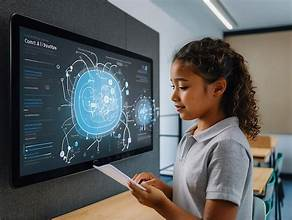Public libraries across the United States are stepping into the future of education by launching AI-powered tutoring tools designed to support students of all ages. With rising demand for accessible and personalized learning support, libraries are turning to artificial intelligence to provide real-time academic assistance—free of charge.
This move is not just a technological upgrade; it’s a commitment to equal learning opportunities. From small-town branches to urban hubs, libraries are empowering communities with tools once limited to private institutions and tech-savvy households.
What Are AI Tutoring Tools?
AI tutoring tools are smart educational platforms that use machine learning, natural language processing, and predictive analytics to assist users in real-time. These platforms can answer questions, explain concepts, and offer guided practice in subjects like math, science, reading, and even computer coding.

Many of the tools being adopted are cloud-based and easily accessible via library computers or personal devices using library credentials. Some even feature voice assistants or chatbot-style interactions for a more engaging experience.
One example is Khanmigo by Khan Academy, an AI tutor developed in partnership with OpenAI, which several libraries are now piloting.
Why Libraries Are Turning to AI
The decision to integrate AI into library services follows a growing need for accessible, affordable tutoring. Many students fell behind during the COVID-19 pandemic and now require extra support outside the classroom. However, traditional tutoring can be expensive or geographically limited.
Librarians and educational advocates see AI as a solution to several challenges:
- Personalized Learning: AI tools adapt to a student’s pace and style.
- 24/7 Access: Some tools are available anytime with a library login.
- Subject Variety: From basic arithmetic to college-level writing, AI tutors cover it all.
- Multilingual Support: Tools are available in multiple languages to support ESL learners.
Where and How to Access These Tools
Libraries in cities like New York, Chicago, San Francisco, and Austin have already rolled out pilot programs. In most cases, patrons can access the tools by logging into the library’s digital resource portal.
Some libraries are even hosting in-person workshops to help students and parents learn how to use the AI platforms effectively.
In rural areas, mobile libraries and bookmobiles equipped with Wi-Fi hotspots are also offering access to these AI tutors, ensuring that students in underserved areas are not left behind.
Real Stories, Real Impact
Students and parents are already seeing results. In Brooklyn, 13-year-old Javier, who once struggled with algebra, is now scoring higher after just three weeks using an AI math tutor at his local branch.

“I never thought library computers could help me this much,” he said. “It explains stuff better than my school books.”
Teachers, too, are reporting improvements. “We’ve seen kids who used to dread homework come in and actually enjoy solving problems,” said Ms. Lila Henderson, a librarian in Detroit.
Privacy and Safety Considerations
As with any AI-powered tool, privacy and data protection are critical. Libraries are partnering only with platforms that follow strict data-use policies and don’t store personal information.
Most tools run in private browser sessions or through secure library portals, reducing the risk of misuse. Additionally, librarians receive special training to monitor and manage the use of these platforms to ensure ethical use.
AI Tutors: Complement, Not Replacement
While AI tutors offer powerful support, experts stress that they are not meant to replace teachers or human interaction. Instead, they serve as an extra layer of help—especially for students who might not otherwise get the attention they need.
Education consultant Dr. Nina Brooks explains, “Think of AI tutors as learning companions. They provide instant support but still need human guidance to be fully effective.”
The Future of AI in Public Libraries
With early results showing promise, libraries plan to expand these tools beyond school subjects. Future features could include:
- AI Resume Builders for job seekers
- Language Practice Tools for ESL learners
- Interactive Storytelling for children’s reading programs
- Homework Helplines powered by AI chatbots
The American Library Association (ALA) has also launched a national initiative to train librarians in AI literacy so they can guide patrons effectively.
How You Can Benefit
Anyone with a library card can start using these tools, depending on their local library’s offerings. Here’s how:
- Check your library website for digital learning or tutoring tools.
- Attend an orientation workshop or ask a librarian for guidance.
- Log in and explore subjects where you need help.
Even if your library hasn’t rolled out AI tutoring tools yet, you can request them. Many systems are still expanding and value community feedback.
Conclusion: A Smarter Way to Learn, Together
The launch of AI tutoring tools in public libraries represents a milestone in community education. By embracing technology, libraries are staying true to their mission—making knowledge accessible to everyone.
Whether you’re a student falling behind, a parent searching for homework help, or an adult looking to brush up on skills, your local library might just have the smartest tutor in town.
Discover More: Learn how Khan Academy’s AI tutor Khanmigo is transforming learning across the U.S., and check with your local library about access.
Also Read – New Tech Campus in NYC Creating Jobs and Innovation






